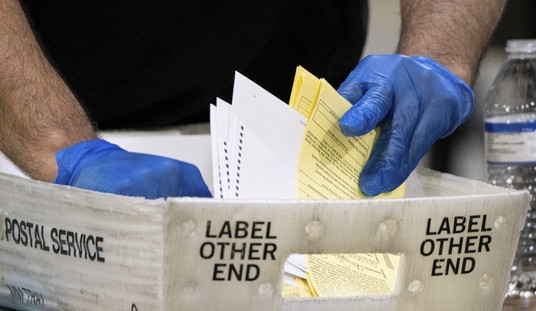With President Obama’s own budget projecting federal spending for this fiscal year of $3,819 billion ($3.8 trillion), and a federal deficit of $1,645 billion ($1.6 trillion), grassroots conservatives and Tea Party activists were rightly impatient with Republican talk of piddling budget cuts of $4 billion or $6 billion or $12 billion for one or two weeks of continued funding of the federal government, with Democrats resisting even that. But Paul Ryan’s 2012 budget released yesterday has completely revolutionized the debate, with spending cuts of $6.2 trillion over the first 10 years alone.
The talk of the government shutdown this week and the negligible cuts of $30 billion to even $70 billion are a sideshow relating to fiscal year 2011, which is already more than half over. Last year’s Democratic Congress never got around to adopting a budget and providing funding for this fiscal year, and the Democratic-controlled Senate still has never provided any funding for the rest of this year. Only the Republican House has passed a Continuing Resolution (CR) funding the government for the rest of fiscal year 2011 (ending on September 30), which provides for $61 billion in cuts this year compared to the baseline of current spending, and $100 billion compared to the spending for this year in President Obama’s budget.
The main event is Ryan’s 2012 budget, which is a complete blueprint for federal budget policy for the next 10 years, changing course for decades into the future. Don’t fail to appreciate Ryan’s budget in all of its carefully crafted, beautiful complexity. For what it proposes is effectively to repeal the Obama administration and save America from a death spiral decline into bankruptcy. And now that Ryan has shone the light on the careful, politically feasible path for doing that, America has turned the corner towards that result in the 2012 elections.
Ryan’s budget roadmap begins with spending cuts that reduce the deficit every year, until the budget is permanently balanced, and then continues the spending cuts until the national debt is ultimately paid off completely. It does that with absolutely no tax increases, indeed with substantial reductions in tax rates, making America competitive again and restoring booming economic growth. Over the long run, federal spending is reduced by 2050 to less than half of what it would be on President Obama’s current course, due primarily to the beginnings of fundamental entitlement reform, including the repeal and defunding of ObamaCare. This is now the official budget of the Republican House majority, which is an enormous accomplishment and testament to Ryan’s leadership.
Ryan’s $6.2 trillion in spending cuts can be contrasted with President Obama’s 2012 budget proposal to increase federal spending by another $400 billion over the current runaway spending baseline. After campaigning in 2008 on “a net spending cut,” President Obama has already increased federal spending by 28% since he first came into office. In his 2012 budget, President Obama proposes overall to increase federal spending by another 57% to over $5.7 trillion by 2021, according to the CBO. Ryan’s budget proposes to cut Obama’s spending by a trillion dollars in that year alone.
Ryan’s budget proposes first to cut non-security domestic discretionary spending back to pre-stimulus, pre-bailout levels, lower than in 2008. Total federal spending is reduced by 2015 to 20% of GDP, which is the long-run, postwar, historical average. By 2050, federal spending is reduced to 15% of GDP, less than half the spending projected by the CBO under President Obama’s current course.
Ryan would reduce the federal deficit to below $1 trillion by next year, while President Obama would run still another trillion dollar deficit estimated by the CBO at $1.2 trillion. That would make the fourth year for Obama with unprecedented deficits over a trillion, the highest previously being $458 billion under President Bush, with Reagan’s highest at $221 billion. By 2021, President Obama’s budget would still be running a deficit of $1.2 trillion, according to the CBO. Ryan’s budget would slash the deficit to $385 billion by that year, on its way to full, permanent balance soon thereafter.
Ryan’s budget proposals would reduce the national debt by over $5 trillion compared to our current course in the first 10 years. Under President Obama’s 2012 budget, by contrast, the national debt would more than double during his one term in office, which means he will increase the national debt in those four years by more than all prior presidents, from George Washington to George Bush, combined. By 2021, President Obama would have tripled the national debt from 2008. Ryan’s budget would continue to reduce the national debt until it is paid off entirely.
Ryan’s budget would hold federal taxes at their long-run, postwar, historical average of 18.3% of GDP. That would involve repealing the $1.5 trillion in tax increases in President Obama’s budget, which are already provided for under current law. Indeed, Ryan proposes to reduce the top federal personal income tax rate to 25% in a tax reform that would eliminate many loopholes in return. Indeed, the previously released Ryan Roadmap long-term budget plan shows that Ryan’s revenue goals can be reached with that 25% rate applying to incomes over $100,000 per year, with a 10% rate applying to incomes below $100,000.
Ryan also proposes corporate tax reform, reducing the top corporate rate to 25% as well, in return for eliminating loopholes that enabled General Electric to pay no taxes last year, while earning $14 billion in profits. American business currently suffers virtually the highest corporate tax rate in the industrialized world at nearly 40%, counting state corporate rates on average. Even in the mostly socialist European Union, the corporate tax rate has been reduced from 38% to 24% over the last 15 years, with lower corporate tax rates from China to India to Canada leaving American business uncompetitive in the world. Yet President Obama only proposes to raise taxes on American business, which explains why America has suffered the worst economic recovery since the Great Depression under President Obama.
Ryan’s budget, by contrast, would restore economic growth and traditional America prosperity. The Heritage Foundation’s Center for Data Analysis estimates that under Ryan’s budget nearly 1 million jobs would be created next year, with unemployment declining to 4% by 2015. GDP would grow by an additional $1.5 trillion over the next 10 years, including $1.1 trillion in higher wages, providing $1,000 in additional family income each year. By 2020, the economy would be creating 2.5 million private sector jobs each year.
Ryan’s budget begins entitlement reform by repealing and defunding ObamaCare entirely. It continues that by extending the enormously successful welfare reforms adopted in 1996 by the then-Republican Congress, which involved repeal of the entitlement status of the AFDC (Aid to Families with Dependent Children) program, replacing it with fixed federal block grants back to the states to finance an entirely new welfare program based on work. Under those reforms, two-thirds left the old AFDC rolls and went to work, with their incomes rising and child poverty plummeting as a result, while spending under the old program declined by half from prior trends.
Ryan provides for such block grants for Medicaid as well, giving the states control to redesign the program to the ultimate benefit of both taxpayers and the poor. Medicaid pays so little to doctors and hospitals today that the poor suffer troubling difficulties in obtaining essential health care under the program, with worse health outcomes as a result. Ryan’s reforms would allow states to provide the poor with funding to purchase private health insurance, which would free the poor from the Medicaid ghetto to enjoy the same health care as the middle class. Ryan also extends block grants to food stamps, with a work requirement for the able bodied under both programs. Dozens of overlapping job training programs are consolidated under state control as well.
Under Ryan’s Medicare reforms, new retirees starting in 2022 would be free to use their share of Medicare funds for the purchase of private health insurance. Lower income and sicker retirees would get more to ensure their continued access to essential care, while higher income retirees would get less.
Ryan’s budget would also terminate hundreds of duplicative federal programs, reduce farm subsidies, cut the federal work force by freezing hiring, terminate federal bailouts, and slash corporate welfare, including President Obama’s handouts for uncompetitive, high cost energy. Ryan was wise to avoid any Social Security benefit cuts, because allowing workers the freedom to choose personal accounts for the program is a far better alternative, shifting that spending to the private sector. But politically that requires a new president to champion.
Instead of considering these serious, responsible, long-term reforms, President Obama, Senate Majority Leader Harry Reid, and other Democrats seem to be spoiling for a government shutdown over the minor budget cuts involved in the continuing resolution for 2011. They think they and their media allies can dupe gullible voters into blaming the Republicans for any shutdown. They misread the politics of the 1995 shutdown, when voters actually rewarded both the congressional majority Republicans and President Clinton for agreeing to budget cuts that balanced the budget then without tax increases. It is time for grassroots conservatives, Tea Party activists, and mainstream Americans to hold today’s New Left Democrats responsible for their manipulative, irresponsible cynicism.
Update: Also read “Boehner: Democrats win in a shutdown” and “Obama in campaign mode, still demagoging budget battle” at the Tatler.









Join the conversation as a VIP Member